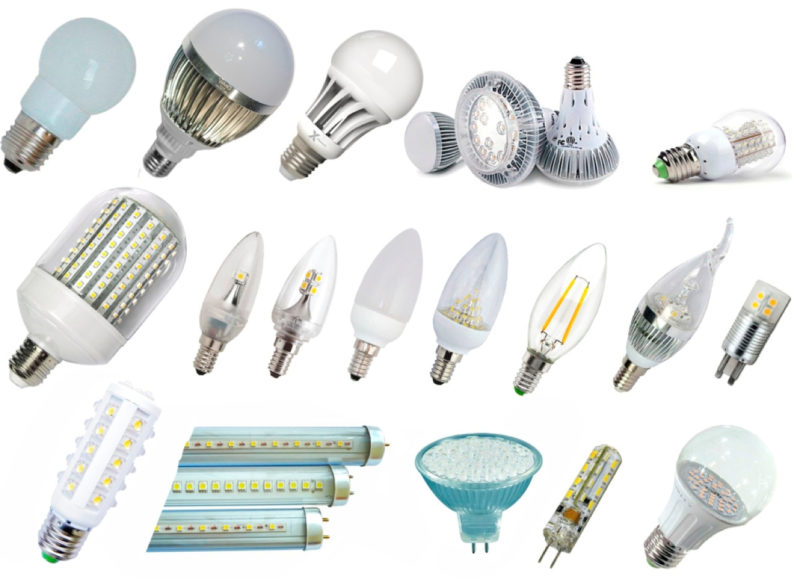LED bulbs designation
Buying LED lamps in most cases is not a problem for buyers. Many people do not even try to understand the markings on the packaging, while others simply do not understand the meaning of the presented set of symbols. And yet they play an important role. Failure to take these parameters into account can lead to the purchase of an inefficient, inconvenient or simply unsuitable light source. For this reason, the labeling of lamps should be considered with the utmost care.
Luminous flux
Luminous flux is a parameter of the luminous power of a LED device, measured in lumens. The characteristic allows you to determine the efficiency and economy of a particular model under specified operating conditions.
According to the luminous flux a comparison of LED devices with incandescent lamps and other light sources. Special tables are used for this purpose.
The power of the luminous flux is several times higher than that of other light sources. Selecting models according to these parameters, do not forget that after the operating time LED models lose significantly in brightness.
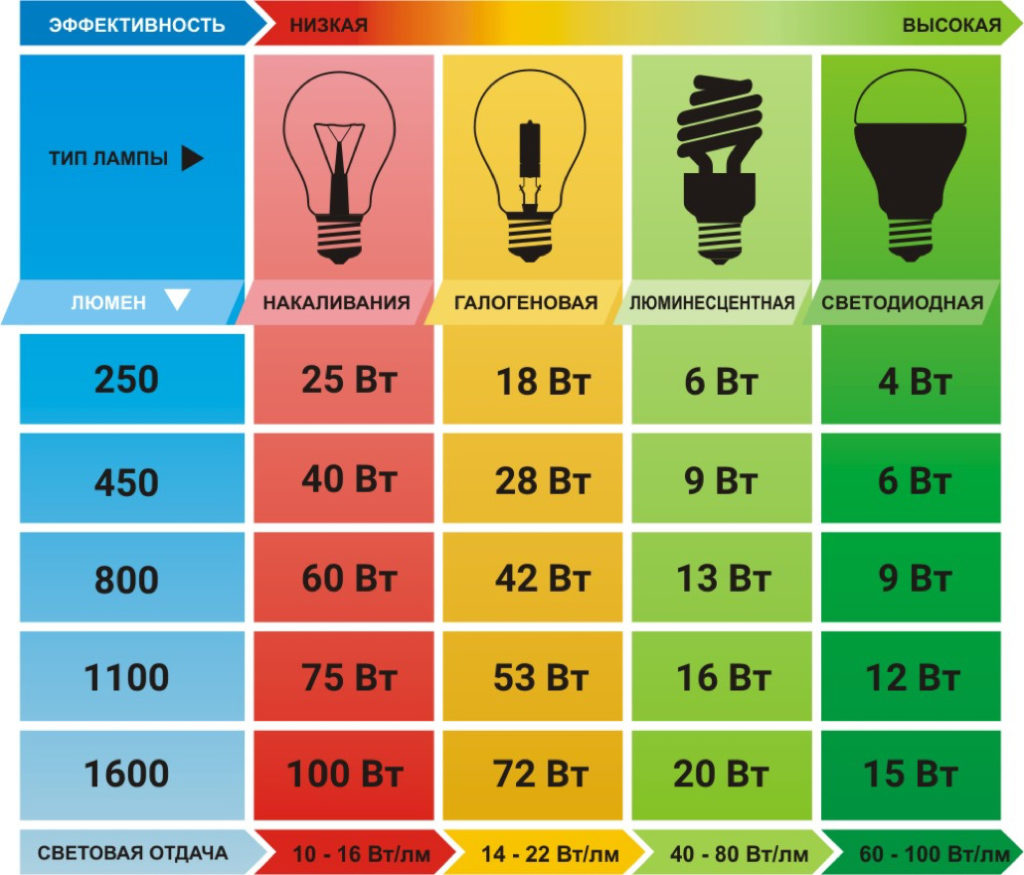
Type of bulb and socket
LED lamps offered to customers differ in shape and size of the bulb. These parameters are determined by specific values on the box.
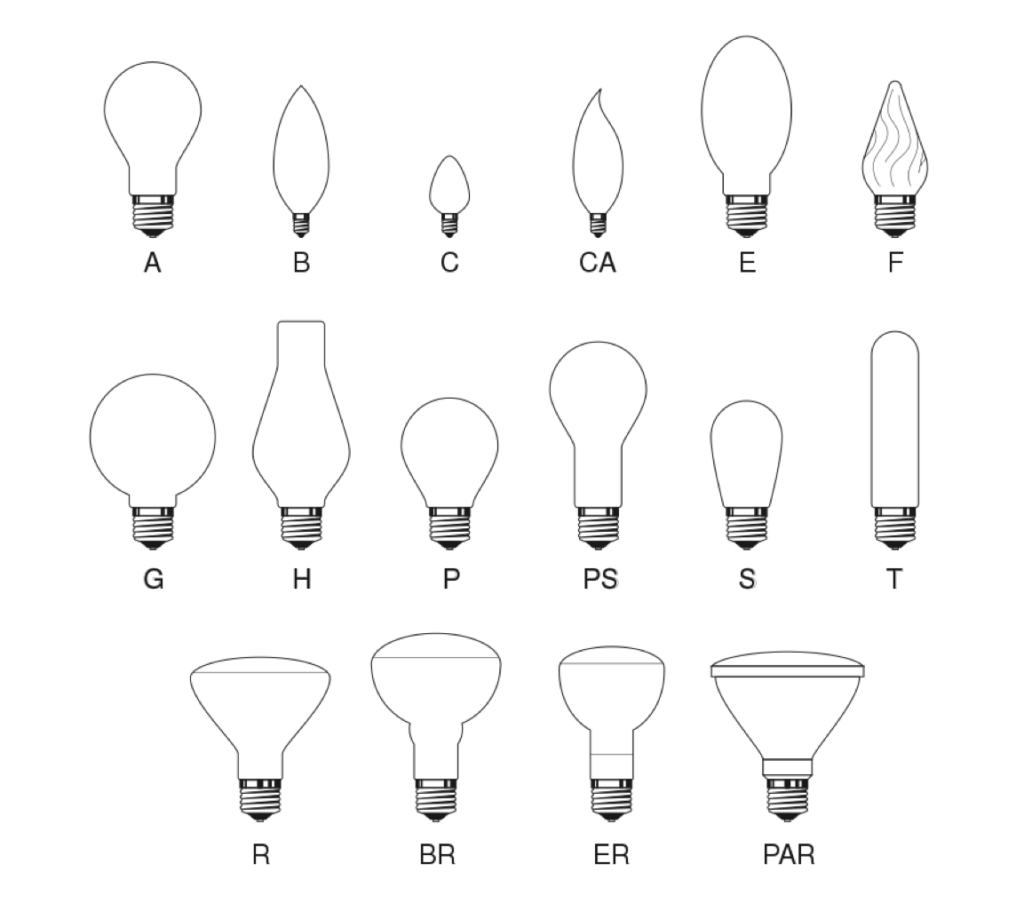
The most popular bulb markings and their deciphering:
- A- traditional shape, resembling a pear (similar to incandescent bulbs);
- C - candle shape;
- R - reminiscent of a mushroom;
- G - spherical bulb;
- T- tubular construction;
- P - spherical shape.
To connect the device in the lighting system, a base is used. The most popular are considered traditional bases marked "E". They have a connection to the socket by means of a thread.

Next to the letter there is a number that defines the diameter of the thread. Many devices have a socket with the abbreviation E27. They are suitable for replacing traditional incandescent bulbs. Slightly less common are models with the abbreviation E14, which implies a reduced diameter of the thread.
In street lamps, you can often find devices with a larger diameter E40 base. The bulb itself in this case is also significantly larger.
Markings "G" and "U" can be deciphered as a pin connection with a cartridge. The number following the letter means the distance between the two pins. These models are most often found in ceiling lights.
As an alternative to halogen lamps, LED devices marked "GU5.3" are used. They perfectly fit into a spot-lighting system.
In many cases, rooms are fitted with LED lights as additional illumination. Surface-mounted fixtures with "GX53" socket are used.
Parameters of the network
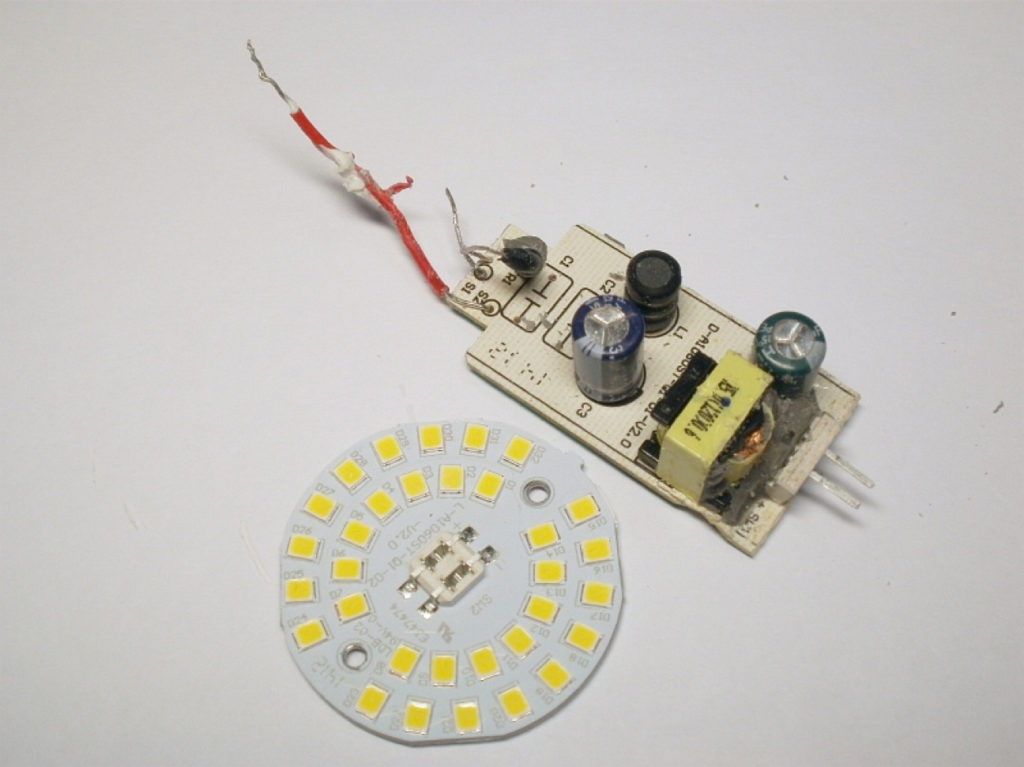
All LEDs function only when DC power is applied. Normal mains in a socket assumes alternating current with a high voltage rating. Therefore, one of the main components of any lighting fixture appears to be the driver. This power supply is based on PWM modulation and boasts high reliability.
Most modern light bulbs are equipped with a built-in driver installed in the inside of the heat sink. This component rectifies the AC current and limits the voltage. The driver can only work with the device in which it is installed. It is not designed for additional external load.
There are also remote drivers that are used on specific light sources and LED strips. In particular, the organization of RGB lighting uses sophisticated driver circuit, capable of supplying its own voltage value to each crystal. Without such a function, it is impossible to form a multicolor backlight.
Color temperature
Traditional incandescent bulbs have one color: yellow. In LED models it is possible to adjust the color temperature, achieving both yellow shades and almost white glow.
The color rendering scale is based on the color of a glowing metal. The values are measured in Kelvin. Standard daylight is defined by temperatures up to 6,000 degrees Kelvin, and glowing metal is defined by temperatures up to 2,700 degrees Kelvin.
All light above 6,500 degrees Kelvin can safely be categorized as cool bluish hues. Choosing a lamp for the house, it is advisable to take into account the color temperature, because the different luminescence can lead to a different display of individual items or the interior as a whole. In addition, the wrong shade sometimes causes increased eye fatigue.
On the boxes manufacturers always try to indicate a specific color temperature, as well as give a spectrum for a better understanding of the parameter.
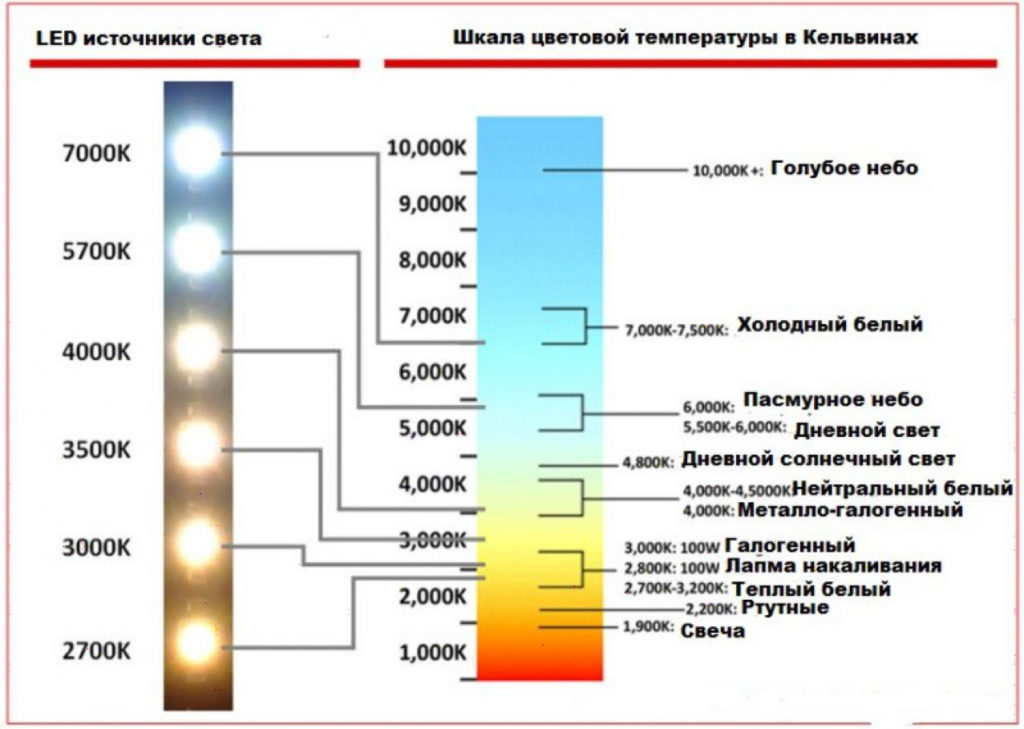
Service life
Brands that make LED devices, the packaging indicates how many hours can run the installed in the design of diodes. Such a figure is very approximate, since in addition to diodes can fail and other nodes. As a result, service life will depend on the quality of components used, the correctness of soldering and operating conditions.
Power
The most obvious parameter by which users often choose a lighting fixture. Means energy consumption per hour and is expressed in watts (W, W). The characteristic is most often written on the box in large numbers, and the equivalent value of an incandescent lamp is given next to it.
At home, it is advisable to choose devices with a power of 3 to 20 watts. Outdoors, they will be effective at about 25 watts.
When replacing standard incandescent bulbs with LED fixtures, you should use tables that make analogies in power and efficiency between products of different types.
Light output
Luminous efficacy relates the luminous flux and the power of a luminaire. This indicator is defined in Lm/W and accurately reflects the efficiency of a particular LED lamp. On this parameter, LEDs are often compared to a bygone incandescent lamps, confirming the usefulness of the former. On average, the light output of LED devices is 10 times greater than incandescent lamps with the same flux.
It is desirable to buy only high-quality models from well-known manufacturers, because the Chinese analogues in fact may not be as effective.
Diffusion angle
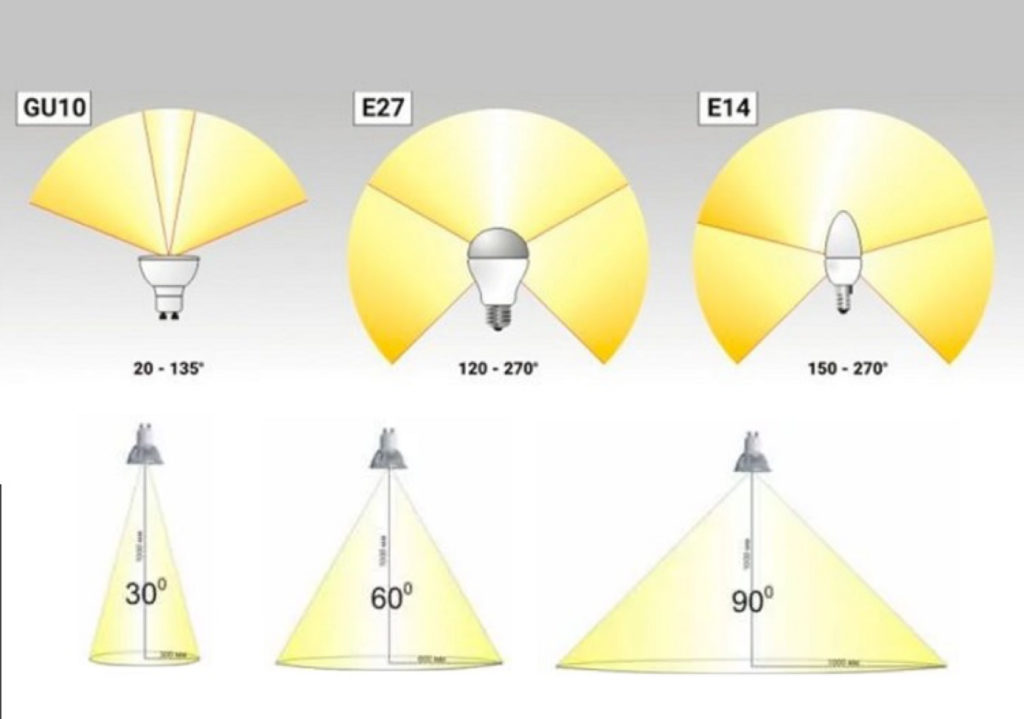
Any LEDs have specific properties of directional light. For the distribution of light in the luminaires can be installed special diffusers. You can also adjust the direction by fixing LEDs at different angles.
In today's lighting fixtures, the scattering angle is usually 30, 60, 90 or 120 degrees. The most advanced models can boast a dispersion angle of 210 degrees.
Fire hazard .
All LED devices are much safer than incandescent bulbs. Even during very long operation, these devices only heat up to 50 degrees Celsius, which prevents their destruction, and also does not allow you to badly burn yourself.
Low heating temperatures during operation allow the devices to be used in rooms with flammable materials. In this case, the manufacturers usually do not indicate the level of flammability on the packages.
Protection level against dust and moisture
The level of protection of the lamp against dust and moisture directly depends on where exactly is planned to use the lighting device. For outdoor lamps the protection level is the same, but for home lamps it is completely different. As a designation of protection is used marking type IPXX, where XX - a specific index of protection.
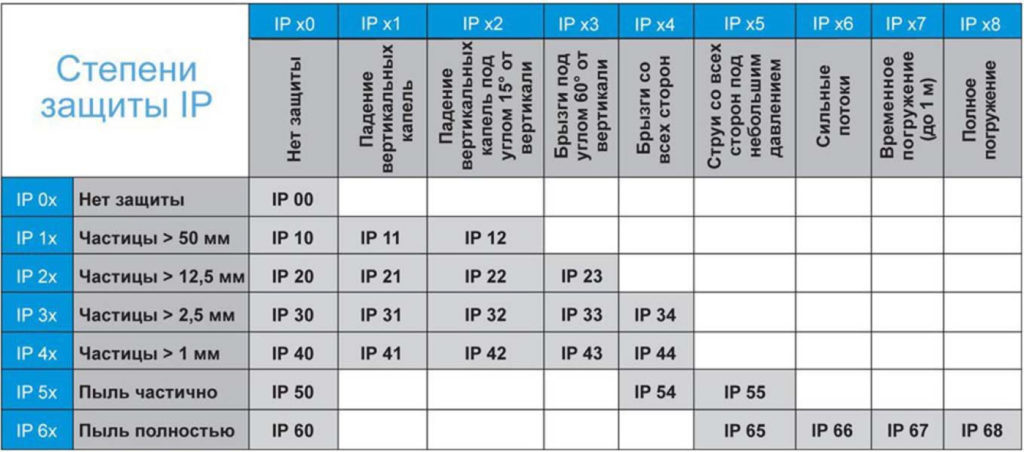
Radio-electronic counteraction (REP)
A large number of LED lights during operation create a flickering effect, which negatively affects eyesighting and reduces the comfort of being indoors. In order to get rid of or mitigate this effect, add-ons are used that make up the radio-electronic countermeasures (REP) system.
When buying lamps, the ripple factor deserves attention. The lower this parameter, the more uniform the glow will be.
Flicker is commonly referred to as high-frequency flicker produced by a lighting fixture during operation. Visually, such pulsations are virtually undetectable, but the brain is actually capable of responding to flashes of up to 300 Hz.
- The abbreviation REP on LED lamps usually means exactly the ability of a particular device to prevent occurring pulsations and smooth them out to a minimum. It is also often referred to as the pulsation factor and is expressed as a percentage.
- Recently, pulsation rates have been regulated and controlled by sanitary standards. For this reason, many public places have regular lighting inspections.
- Manufacturers very rarely indicate the ripple factor on their bulbs. However, you can find the "no ripple" designation on quality fixtures.
We suggest you watch this video: What to consider when choosing LED bulbs.
Determine the pulsation of a particular lamp can be determined by using an oscilloscope. In this case, the values of the amplitude of oscillations and the voltage of the power supply are recorded. The amplitude is then divided by the voltage to get the pulsation factor.
